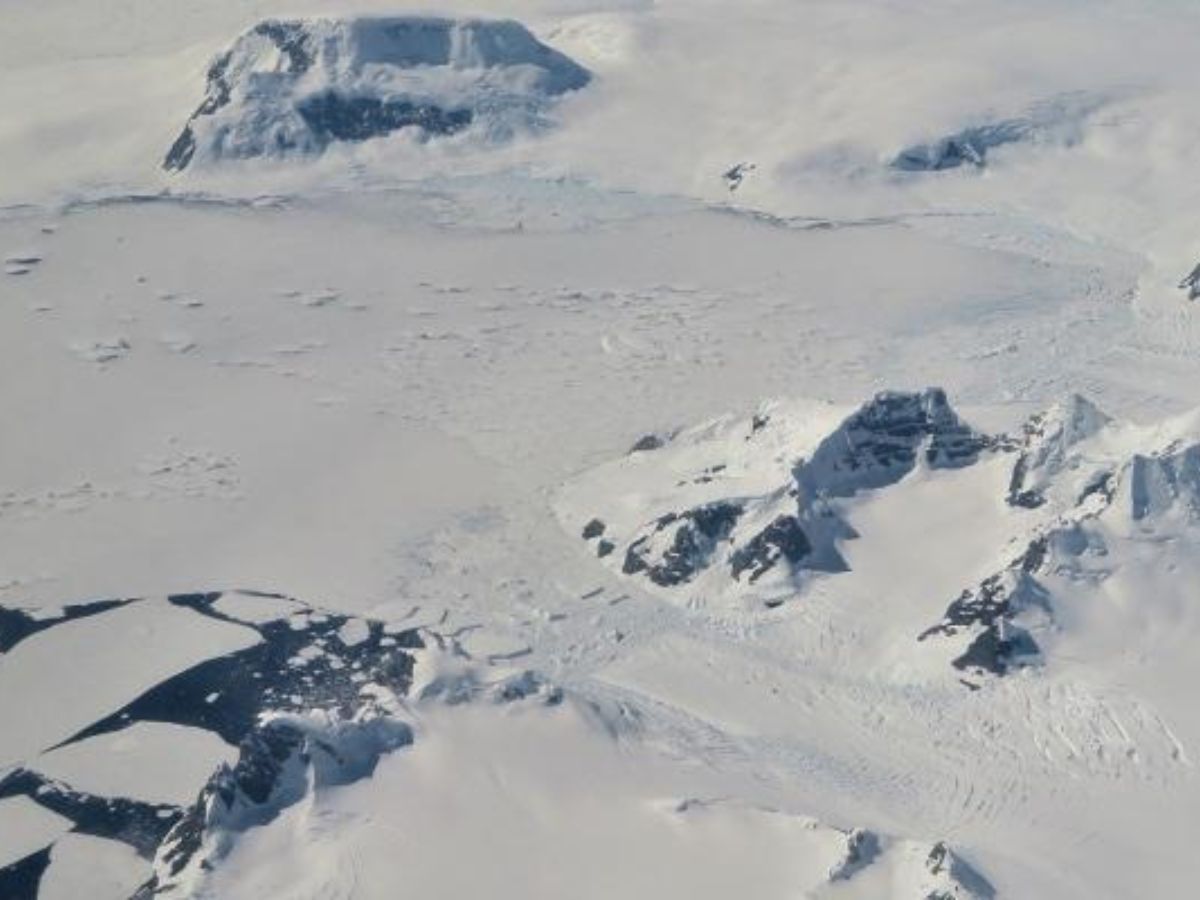Antarctica's Glaciers Are Flowing Faster Than Usual In The Summer, Satellite Images Show. Here's Why
The speed of the Antarctica's glaciers has been found to increase by up to 22 per cent in the summer when temperatures are warmer.

Antarctica's glaciers, which are giant blocks of moving ice along the continent's coastline, are flowing faster than usual in the summer, satellite images have shown. This is happening because of a combination of melting snow and warmer ocean water, according to a new study published in the journal Nature Geosciences.
Speed of glaciers increases by up to 22 per cent in summer
The average speed of glaciers is around one kilometre each year. However, the new study, led by the University of Leeds, has found a seasonal variation to the speed of the ice flow. The speed of the glaciers has been found to increase by up to 22 per cent in the summer when temperatures are warmer. This sheds light on the way climate change could affect the behaviour of glaciers and the role they could play in increasing sea levels.
What causes mass loss from the Antarctic Ice Sheet?
Ice dynamics are responsible for mass loss from the Antarctic Ice Sheet. Moreover, ocean-driven melt leads to ice flow acceleration, according to the study.
Over the past few decades, long-term ice speed change has been measured in Antarctica. However, observations of short-term seasonal speed variability are limited.
Satellites provide better insights into ice dynamics
Scientists face several difficulties while conducting fieldwork on glaciers, as a result of which study of the rugged Antarctic Peninsula, the largest reservoir of frozen water on Earth, has been limited. However, advances in satellite technology have helped scientists view the Antarctic glaciers from space, and obtain new insights into the speed at which these giant blocks of ice are moving and draining water into the surrounding ocean.
Between 1992 and 2017, there has been an estimated 7.6-millimetre rise in global sea levels due to melt water from the glaciers.

How the study was conducted
As part of the new study, researchers used more than 10,000 satellite images, taken above the Antarctic Peninsula between 2014 and 2021, to understand how the flow of glaciers into the waters around the Antarctic changes during colder and warmer periods. These are images of 105 glaciers on the west Antarctic Peninsula captured by the Sentinel-1 satellite.
The most northern and warmest region of Antarctica, the Antarctic Peninsula has a 1,000-kilometre-long mountainous spine, similar to the length of the east coast of Great Britain. The Antarctic Peninsula harbours a rich marine ecosystem of seals, penguins and whales.
Why Antarctic glaciers flow at higher speeds in the summer
The glaciers along the west coast of the Antarctic Peninsula drain the ice sheet directly into the Southern Ocean.
Glacier speed-up occurs in summer as snow melts and the temperature of the waters in the Southern Ocean rise, analysis of satellite data showed. Water from the melting snow acts as a lubricant between the ice sheet and the underlying rock, as a result of which friction is reduced, and the speed at which the glaciers slide increases.
The average summer-speed up is about 12.4 per cent, and a maximum speed change of up to 22.3 per cent occurs for glaciers with the most pronounced seasonality.
The warmer waters of the Southern Ocean erode the front of the moving ice, and this reduces the buttressing forces exerted by the ice to resist the ice flow.
In a statement released by the University of Leeds, Ben Wallis, first author on the paper, said one of the important findings of this study is that it reveals how sensitive glaciers in Antarctica are to the environment. It has been known for a long time that glaciers in Greenland have a seasonal behaviour, but it is only now that satellite data has shown similar behaviour in Antarctica, Wallis said.
Dr Anna Hogg, one of the authors on the paper, said the Antarctic Peninsula has seen some of the most rapid warming of any region on Earth, and continuing work like this will help glaciologists monitor how quickly change is occurring, and enable accurate assessments of how Earth's ice will respond to climate change.
Sentinel-1 is fitted with synthetic aperture radar which can "see" through clouds, and hence, enables measurements of the glaciers to be obtained both day and night.
Related Video
Southern Rising Summit 2024: How Important is Self-Awareness? Insights from Anu Aacharya | ABP LIVE






































